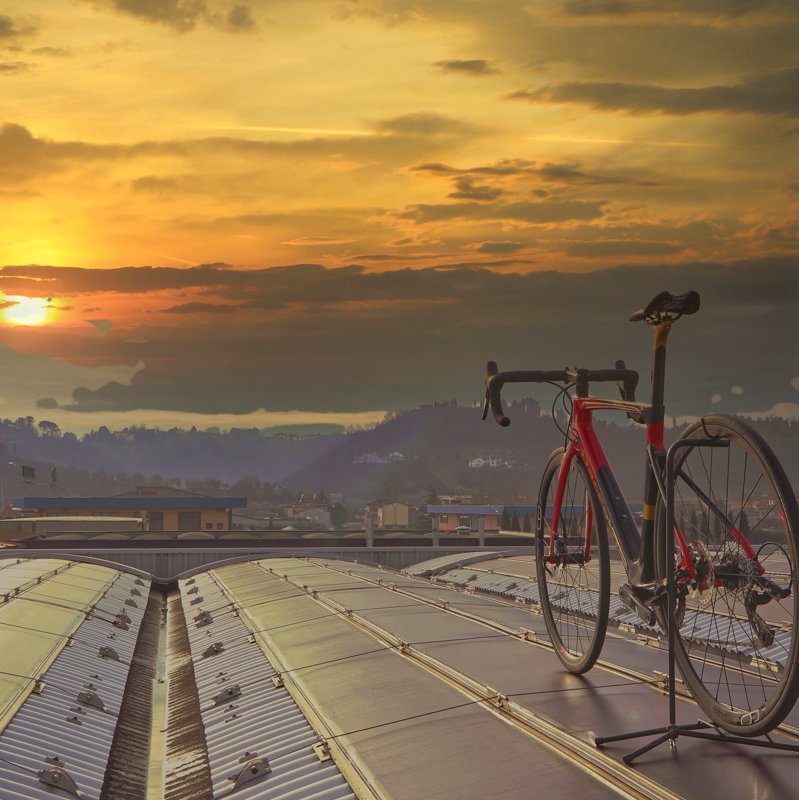Inside a carbon tube
In constructing the tubes, we use various diagonals of the unidirectional carbon fibres to maximize rigidity, resistance and balance the tensions during road / off-road use of the frame. The tubes of the frame’s front triangle have – depending on the model and type – asymmetrical reinforcements and symmetrically arranged canvases. Pipes generally work in flexion and flexion-torsion: to counteract the tensions, the lay-up of the carbon fibres is arranged radially and at 45° longitudinally. Tubings are made with High Modulus carbon to have very high stiffness and resistance and High Resistance carbon module to increase the tenacity and resistance to breakage due to fragmentation. The fibres, made of carbon Toray T 700 and T800 type, laminated in triple thickness, are pre-impregnated with appropriate resins. Externally, tubings are finished with Plain 3K. The outer fabric also contributes to the resistance of the tube itself. Internally there are various types of fabric and lay-up.
The stratification technique
The production process using high-pressure Mandrel Wrapping in an Autoclave guarantees the best final resistance of the material by reducing to zero voids for gas or air. In addition, the distribution of the resin evenly throughout the tissue is essential. This slightly increases the specific weight but guarantees an increase in resistance for the same material section and permits the thickness reduction to the minimum value. Finally, the stratification technique consists in adding sheets of carbon fibre alternating with sheets of Kevlar, and mixing them with the resin. Kevlar gives a touch of elasticity to the structure. This makes the frame more robust and able to better absorb impact shocks due to falls, but also the roughness of the road or off-road terrain.
Carbon fibres and high temperatures
Carbon frame assembly techniques
In order to assemble the frame, the carbon tubes must be cut to the desired length and then joined together with a touch of glue, just to give shape and the right angles to the frame. Once the tubes are joined together, they are then reinforced with additional layers of carbon fibre and resin to increase strength and rigidity. This process is called “tube-to-tube”, in which the fibres are woven together to create a strong, lightweight connection. It is more costly but produces a stronger and more durable frame. And also it allows to build a real custom-made frame, calibrating every single millimetre of the geometry.








